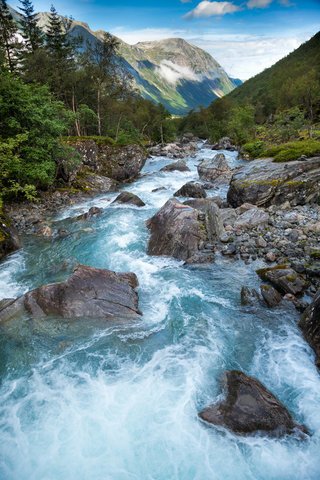Towards ecologically relevant fine sediment targets in chalk streams
14 June, 2024
By Beth Mondon1,2*
1AECOM, Manchester, UK
2University of Southampton, Southampton, UK
Beth Mondon is a Fluvial Geomorphologist at AECOM who recently completed her PhD at the University of Southampton. Here, Beth discusses the fine sediment problem in chalk streams and key findings from her research on the development of ecologically relevant fine sediment targets.
Edited by Rachel Stubbington, Nottingham Trent University
Rachel is both a Fellow of the Freshwater Biological Association and long-standing Editor of FBA articles. If you would like to submit an article for consideration for publication, please contact Rachel at: rachel.stubbington@ntu.ac.uk
The fine sediment problem
Fine sediment (organic and inorganic particles <2 mm) plays an important role in freshwater ecosystems and is critical for their natural functioning. However, elevated fine sediment quantities are a key factor contributing to chalk stream degradation, with only 17% of UK systems classified as being in ‘good ecological status’ in 2020 (Environment Agency 2020).
Chalk streams are a globally rare type of river system, with 85% found in England. They are groundwater-dominated systems, with most (>75%) of their flow coming from chalk aquifers, resulting in stable, low-energy flows with little capacity to mobilise bed sediment. These flow conditions contribute to a distinctive channel form, including high width-to-depth ratios, limited catchment-to-river connectivity and low rates of active bank erosion (Sear et al. 1999). Chalk streams, therefore, have low amounts of sediment available for transport, and low suspended sediment concentrations compared with other UK river systems (Cooper et al. 2008). Consequently, their gravel beds should naturally lack elevated fine sediment storage (Fig. 1), creating ideal habitats for numerous protected species, including Atlantic salmon, stream water-crowfoot and lamprey.
Despite this, chalk stream gravel beds regularly have higher fine sediment quantities than other gravel-bed rivers. This is a consequence of their natural hydrological conditions (i.e., low bed-mobilising flows), compounded by human activities that have altered channel planforms (e.g., straightening) and flow conditions (e.g., abstraction) and increased fine sediment inputs (e.g., intensive agriculture). These impacts, coupled with the fine sediment sensitivity of critical life-cycle stages of many species (e.g., incubating fish eggs and benthic invertebrates), has resulted in the high potential for long-lasting lethal/sub-lethal ecological impacts in chalk streams.
Figure 1. Examples of chalk stream gravel beds without (left) and with (right) elevated fine sediment quantities.
Sediment targets in chalk streams
Current approaches to defining sediment management targets have been ineffective in chalk streams due to a lack of underpinning scientific knowledge. Importantly, they have failed to consider individual river system responses to fine sediment or to explicitly link the fine sediment problem with its causes. As such, there was a clear need for new, ecologically relevant targets for the dominant processes controlling fine sediment accumulation, to inform revisions to management strategies and enable prioritisation of restoration activities.
To identify these processes, I proposed a new conceptual framework, separating the sediment budget into four overarching mechanisms that control the accumulation of fine sediment (Fig. 2). Low stream power (i.e., low bed-mobilising flows) represented the most critical factor, controlling three of the four mechanisms. However, to establish the nature and extent of management required to address the fine sediment problem, increased knowledge of the current state and sedimentary characteristics of chalk stream gravel beds (including their fine sediment distribution and quantity) was needed.
Figure 2. The four interacting mechanisms that control the degree of fine sediment accumulation in chalk stream gravel beds. Arrow size is proportional to the mechanism’s unmodified influence in the sediment budget (adapted from Mondon et al. 2021).
The sedimentology of chalk stream gravel beds
To establish the state of UK chalk stream gravel beds, I collated sedimentological data (collected using the freeze-core technique) from published and unpublished studies. The resulting dataset is the largest assemblage of chalk stream sedimentological data currently analysed and includes 195 samples from across 11 chalk streams, from 10 studies; Mondon et al. (2024) provides further details. Sampling sites ranged from the River Piddle in Dorset to the River Babingley in Norfolk (Fig. 3).
Figure 3. Locations of the chalk stream gravel bed sampling sites investigated in this study (Mondon et al. 2024).
The data highlighted that, on average, fine sediment quantities were 25% of the total bed weight but were regularly > 40% in systems including the River Test, Hampshire. Most gravel beds were characterised by a coarse surface layer, with quantities of fine sediment increasing with depth into the bed (Fig. 4). Of the investigated gravel beds, 89% were over-saturated with fine sediment, i.e., fine sediment filled the inter-gravel spaces, reducing contact between gravel framework particles (Wooster et al. 2008). Fine sediment quantities in 75% of the gravel beds exceeded thresholds known to cause significant ecological degradation, including high mortality rates in incubating salmonid eggs (Greig et al. 2005; Heywood & Walling 2007).
Figure 4. Fine sediment quantities as a proportion of individual bed layers (terms describing the structure of the gravel bed are defined in Mondon et al. 2024).
Statistical analysis highlighted that both sediment source and transport capacity influenced a system’s propensity to accumulate fine sediment (Mondon et al. 2024). As most chalk stream gravel beds are over-saturated with fine sediment, reducing inputs will have little impact on the fine sediment already present. Consequently, sediment targets need to consider the generation of flushing flows. Further research was needed to determine the magnitude of flows required to increase rates of fine sediment remobilisation.
The remobilisation of fine sediment: a flume study
To establish the extent of flows needed to flush fine sediment from chalk stream gravel beds, I carried out series of flume experiments. The experimental gravel bed and fine sediment size and composition were designed to reflect the average of the 11 investigated chalk streams, ensuring naturally occurring conditions were represented. Cleanout depths (i.e., the depth to which sediment was flushed out of the bed) were measured for cohesive sediment (i.e., sediment that experiences interparticle attractive forces, silt and clay particles <62.5 μm) under increasing flow velocities.
Increases in flow velocities and thus bed shear stress (i.e., the force exerted on the bed by the flow) resulted in increased cleanout depths (Fig. 5). Two processes were identified as important in keeping gravel beds clean of elevated fine sediment quantities: sediment flushing out of the bed, and hydraulic winnowing within the bed. Comparison of the predicted required flushing flows and the flows currently occurring in chalk streams highlighted that required flows are not achieved in most cases.
Figure 5. Flume setup (left) and flushing depths of cohesive sediment (silt and clay particles <62.5 μm) from the gravel bed, post flume runs (right) (Mondon 2024).
Conclusion
The flow velocities determined by this study are some of the first scientifically robust targets that can inform revisions to management and restoration activities aimed at reducing fine sediment quantities in chalk stream gravel beds. In the absence of these targets, the impacts of elevated fine sediment quantities in chalk streams remain unaddressed. Until sediment targets are recognised and adapted in policy and practice, actions to restore these rare river systems to favourable conditions cannot be effectively implemented or measured.
Acknowledgements
I thank my PhD supervisors David Sear, Pete Shaw, Adrian Collins and Tim Sykes for their support and input throughout my PhD, and Hachem Kassem for support in the flume study design and setup. Thanks also to the Environment Agency for funding this research.
Copyright statement
All figures are © the authors.
References
Environment Agency. 2020. WFD Classification Status Cycle 2. Available at: https://data.gov.uk/dataset/41cb73a1-91b7-4a36-80f4-b4c6e102651a/wfd-classification-status-cycle-2
Cooper, D. et al. 2008. Development of guideline sediment targets to support management of sediment inputs into aquatic systems. Natural England. https://publications.naturalengland.org.uk/publication/36003.
Greig, S.M. et al. 2005. The impact of fine sediment accumulation on the survival of incubating salmon progeny: Implications for sediment management. Science of the Total Environment 344: 241–258. https://doi.org/10.1016/j.scitotenv.2005.02.010.
Heywood, M.J.T. & Walling, D.E. 2007. The sedimentation of salmonid spawning gravels in the Hampshire Avon catchment, UK: implications for the dissolved oxygen content of intragravel water and embryo survival. Hydrological Processes 21: 770–788. https://doi.org/10.1002/hyp.6266.
Mondon, B. 2024. The development of ecologically relevant fine sediment targets for chalk streams. University of Southampton, Doctoral Thesis. http://eprints.soton.ac.uk/id/eprint/489023.
Mondon, B. et al. 2021. The scope for a system-based approach to determine fine sediment targets for chalk streams. CATENA 206: 105541. https://doi.org/10.1016/j.catena.2021.105541.
Mondon, B. et al. 2024. The sedimentology of gravel beds in groundwater-dominated chalk streams: Implications for sediment modelling and management. River Research and Applications 40: 508–528. https://doi.org/10.1002/rra.4250.
Sear, D.A., Armitage, P.D. & Dawson, F.H. 1999. Groundwater dominated rivers. Hydrological Processes 13: 255-276. https://doi.org/10.1002/(SICI)1099-1085(19990228)13:3<255::AID-HYP737>3.0.CO;2-Y.
Wooster, J.K. et al. 2008. Sediment supply and relative size distribution effects on fine sediment infiltration into immobile gravels. Water Resources Research 44: W03424. https://doi.org/10.1029/2006WR005815.
Further reading
The Freshwater Biological Association publishes a wide range of books and offers a number of courses throughout the year. Check out our shop here.
Get involved
Our scientific research builds a community of action, bringing people and organisations together to deliver the urgent action needed to protect freshwaters. Join us in protecting freshwater environments now and for the future.














